#prince eugen of sweden
Explore tagged Tumblr posts
Text
How am I only finding out about this man today? 😭 And why is Tumblr sleeping on the homosexual bachelor prince of Sweden who devoted his life to art and bequeathed all his earthly belongings to the nation?
Prince Eugen was born at Drottningholm Palace as the fourth and youngest son of Prince Oscar, Duke of Östergötland. His mother was Sophia of Nassau. The newborn prince was granted the title of Duke of Närke. Upon his father's accession to the thrones of Sweden and Norway as King Oscar II, the Duke of Närke became fourth in line to the throne. Showing early artistic promise, he studied in Paris, and went on to become one of Sweden's most prominent landscape painters. Throughout his life Prince Eugen was a supporter of fellow artists, and also involved in many cultural organisations and committees. A homosexual bachelor, he bequeathed his villa Waldemarsudde at Djurgården in Stockholm, and its collections, to the nation. It is now one of Sweden's most popular museums.
Here is some of his art:





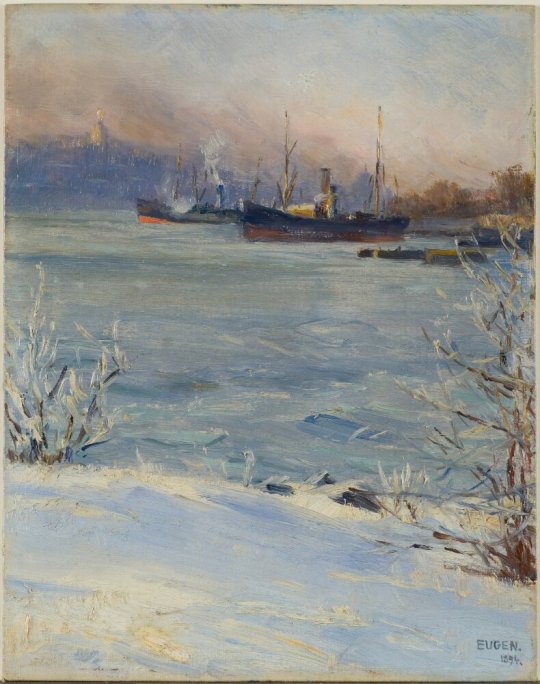
4 notes
·
View notes
Text

Group of trees on the plain - Prince Eugen * , 1912.
Swedish , 1865 - 1947
Oil on canvas laid on panel, 49 x 62.5 cm.
Prince Eugen of Sweden and Norway, Duke of Närke *
161 notes
·
View notes
Text





ANDERS ZORN - GIRLS FROM DALARNA IN THE SAUNA, 1906
The artwork depicts two nude women from the Dalarna region of Sweden in a sauna-like setting. One woman stands, seemingly pouring water from a pail, while the other sits in a wooden tub. This scene captures a moment of cultural practice where people gather for cleanliness, social interaction, and relaxation.
His brushstrokes are loose and fluid, contributing to a sense of movement and the fleeting nature of the moment. This technique helps in suggesting the steam and warmth of the sauna by making the forms appear to dissolve slightly into the atmosphere. Zorn's ability to blend his colors smoothly on the canvas further adds to this effect, creating a seamless transition between the figures and the environment.
Prince Eugen, who was himself an artist and a significant patron of the arts in Sweden, likely commissioned this work due to his interest in supporting and collecting Swedish art. By 1906, Zorn had already painted numerous prestigious subjects, including three American presidents, and had been awarded the Legion of Honour in France. His reputation in Sweden was equally high, making him one of the most sought-after artists for high-profile commissions.
From a broader perspective on Zorn's nude paintings, art historian and critic Karl Asplund wrote about Zorn's ability to blend "the old masters' sense of form with the impressionists' sensitivity to light" (though not specifically about this painting, this comment reflects on Zorn’s technique which would apply here). Another critic, Georg Nordensvan, noted Zorn's work as having "a naturalistic charm, a joy of life and a love for humanity" which can be seen in the intimate, joyful depiction of the sauna scene.
71 notes
·
View notes
Text

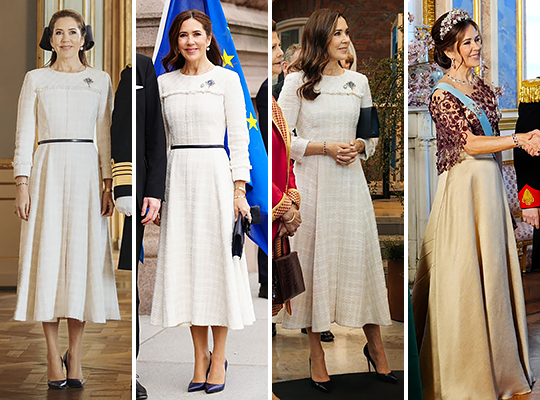
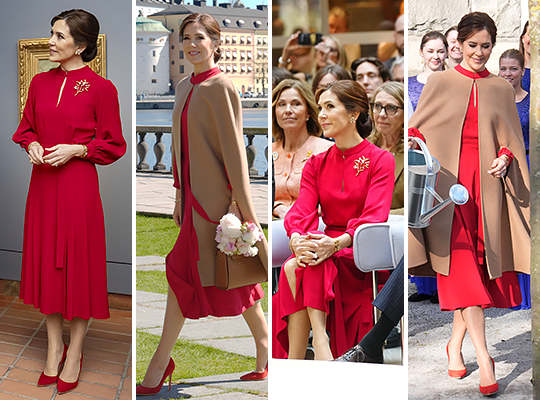
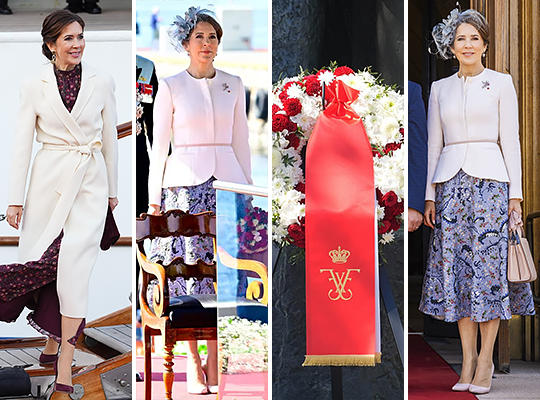
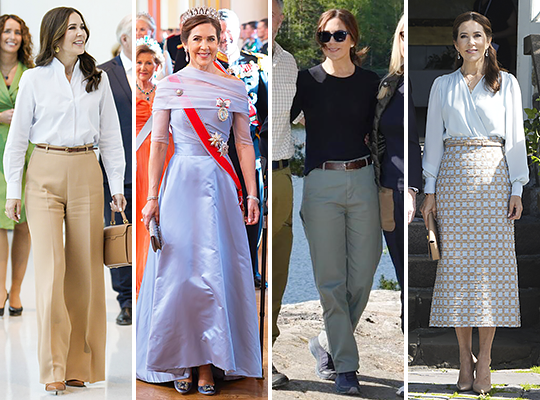

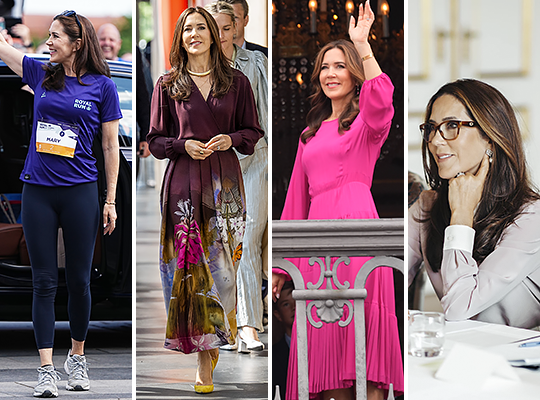

Queen Mary’s Engagements in May 2024:
02/05: Presentation of the Crown Princess Mary Scholarship
02/05: Official Start of Summer Cruise on Royal Yacht Dannebrog - Helsingør
02/05: Official Welcome at Fredensborg
03/05: Changing of the Guards at Fredensborg
06/05: State Visit to Sweden - Official Welcome, Lunch
06/05: State Visit to Sweden - Meeting with Parliament Speaker, Meeting with Prime Minister
06/05: State Visit to Sweden - Royal Institute of Technology
06/05: State Visit to Sweden - Gala Dinner
07/05: State Visit to Sweden - Prince Eugen's Waldemarsudde
07/05: State Visit to Sweden - Lunch at Stockholm City Hall
07/05: State Visit to Sweden - Forskaren Life Science Centre
07/05: State Visit to Sweden - Nordic Museum & Tree-planting
07/05: State Visit to Sweden - Return Event on Dannebrog, Official Farewell
14/05: State Visit to Norway - Official Welcome, Arrival at Royal Palace
14/05: State Visit to Norway - Wreath laying at the National Monument
14/05: State Visit to Norway - Visit to the Norwegian Parliaement, Meeting with President of the Parliament
14/05: State Visit to Norway - Oslo Science City and MiNaLab
14/05: State Visit to Norway - Gala Dinner
15/05: State Visit to Norway - Østmarka National Park
15/05: State Visit to Norway - Meeting with Prime Minister, Jonas Gahr Støre
15/05: State Visit to Norway - The Government's Lunch at Akershus Castle
15/05: State Visit to Norway - Architecture walk on the waterfront in Oslo
15/05: State Visit to Norway - Return Event on Dannebrog
16/05: Receiving UNHCR's High Commissioner, Filippo Grandi
20/05: Royal Run 2024
22/05: Global Fashion Summit
26/05: The King's Birthday Balcony Appearance
30/05: Mary Foundation Annual Board Meeting
30/05: Léonie Sonning Music Award
41 notes
·
View notes
Text

Prince Daniel of Sweden and Princess Estelle of Sweden view the exhibition of Gunnel Wählstrand, at Prins Eugens Waldemarsudde in Stockholm, Sweden -November 27th 2024.
📷 : Lars Edelholm/Kungahuset.
#prince daniel#princess estelle#swedish royal family#sweden#2024#november 2024#gunnel wählstrand#exhibition#royal children#my edit
10 notes
·
View notes
Text


The unique gold, pearl, and cameo tiara from the Swedish royal vaults is packed with history and symbolism, from its initial creation story in Napoleonic France to the tales told by the individual cameos in the piece. Today, we’re unpacking both, with some fantastic close-up views of the parure.
The Cameo Parure, now owned by the Bernadottes of Sweden, was originally given by Napoleon I to Empress Josephine in 1809. The set includes a tiara, a necklace, a bracelet, and a pair of earrings. Today, the parure also includes a brooch, which is believed to be a slightly later addition to the suite. Above, Queen Silvia wears the entire parure—tiara, earrings, necklace, brooch, and bracelet (on her right wrist)—for the Nobel Prize ceremony in 2005.
The tiara made its way from imperial France to royal Sweden by a slightly circuitous route. It was inherited by Josephine’s son, Eugene de Beauharnais, and then passed on to his daughter, Queen Josefina of Sweden and Norway. She bequeathed the cameos to her daughter, Princess Eugenie; she bequeathed it to her nephew, Prince Eugen. He gave the set to Princess Sibylla, mother of the present king, as a wedding gift in 1932, and it has remained with the Bernadottes in Stockholm ever since.
With a central cameo depicting two gods of love, and a shape resembling traditional Scandinavian bridal crowns, it’s no surprise that this fragile, delicate heirloom has become the Bernadotte family bridal tiara. It’s been worn by two of the king’s sisters, Princess Birgitta and Princess Desiree, on their wedding days. It was also worn by his wife, Queen Silvia, at their wedding in 1976, and by their elder daughter, Crown Princess Victoria, at her wedding in 2010.
16 notes
·
View notes
Photo
Prins Eugen (1865-1947) 尤金王子 /他是瑞典近現代著名畫家,藝術家,奧斯卡二世最小的兒子。他的私宅Waldemarsudde現在是瑞典的一個美術博物館。 He was a Swedish painter, art collector, and patron of artists. The Duke of Närke became fourth in line to the throne. Showing early artistic promise, he studied in Paris, and went on to become one of Sweden's most prominent landscape painters. Throughout his life Prince Eugen was a supporter of fellow artists, and also involved in many cultural organisations and committees. A homosexual bachelor, he bequeathed his villa Waldemarsudde at Djurgården in Stockholm, and its collections, to the nation. It is now one of Sweden's most popular museums.

Prins Eugen, Skogen, 1892. Oil on canvas
13K notes
·
View notes
Photo

Solrosor by Prince Eugen Napoleon Nicolaus, Prince of Sweden and Norway
0 notes
Text


this is Prince Eugen (1865-1947). He was the third son of Oscar II meaning he was unlikely to ever become king. So instead he ran with artistic circles at the time, painted, and traveled. He never married or had children.
He was known as the 'painter prince' for obvious reasons, or the 'red prince' due to his intensive leftist tendencies, and argued for Sweden to receive Jewish refugees during WW2, alongside Mia Leche Löfgren.

Here is a cartoon from his time which says, "if Eugen was the ruler"
0 notes
Text

The Cloud - Prince Eugen of Sweden (1865 - 1947).
742 notes
·
View notes
Text

Swedish Royal Family in 1918.
Back row: Crown Prince Gustaf Adolf, Crown Princess Margaret, Prince Wilhelm, Princess Astrid, Prince Carl, Princess Ingeborg, King Gustaf V, Prince Oscar Bernadotte, Queen Victoria, Princess Märtha, Prince Eugen, Princess Ebba Bernadotte and Princess Margaretha.
Front row: Prince Bertil, Princess Ingrid, Prince Carl, Prince Gustaf Adolf, Prince Sigvard and Prince Lennart.
#king gustaf v adolf of sweden#queen victoria of sweden#prince oscar bernadotte#princess ebba bernadotte#prince carl of sweden#princess ingeborg of sweden#king gustaf vi adolf of sweden#crown prince gustaf adolf of sweden#crown princess margaret of sweden#prince eugen of sweden#princess margaretha of sweden#princess märtha of sweden#princess astrid of sweden#prince carl bernadotte#prince gustaf adolf of sweden#prince sigvard of sweden#princess ingrid of sweden#prince bertil of sweden#prince wilhelm of sweden#prince lennart of sweden#swedish royalty#swedish royal#swedish royal family#1918#1910s
46 notes
·
View notes
Photo


Prince Eugen of Sweden (1865-1947) in his garden, and with his dog.
A homosexual bachelor - known as the The Painting Prince, he bequeathed his villa Waldemarsudde at Djurgården in Stockholm, and its collections, to the nation. It is now one of Sweden's most popular museums.
155 notes
·
View notes
Photo




Swedish painter Anna Boberg (1864–1935), a self-described “polar researcher” and Arctic artist.
For over thirty years, from 1901 until 1934, Boberg frequently visited the Arctic, specifically the Lofoten Islands off the Norwegian north-west coast. Here, she and her husband constructed their own home and studio overlooking the Svolvær harbour, a prominent village in the Norwegian cod-fishing industry. This lifestyle is also documented in Boberg’s Swedish-language autobiography Envar sitt ödes lekboll (1934).
Here, I briefly introduce Boberg’s life, travels and artwork and her place in a history of white, Western women in the Arctic.
The sixth of seven children, Boberg was the daughter of Carin Nyström and the architect Fredrik Wilhelm Scholander. Her father was responsible for buildings such as the Stockholm Synagogue and the now former Royal Institute of Technology building in Stockholm. One of her sisters, Ellen, later married the Swedish painter Julius Kronberg. Little is otherwise known of Boberg’s childhood and upbringing.
In 1884, despite her mother’s initial hesitations (her father died in 1881), Boberg became engaged to, and later married, the architect Ferdinand Boberg. The latter was to become one of Sweden’s leading architects, responsible for a number of state-buildings, and private villas on Stockholm’s prestigious Djurgården. These included homes for artists, collectors, and members of the royal family, including Prince Eugen and Prince Carl, brothers to the then Crown Prince Gustaf.
An infinite web of social and professional connections reveals itself in the Bobergs’ lives.
Continue reading
https://artherstory.net/anna-boberg-artist-wife-polar.../
by Isabelle Gapp, Incoming Postdoctoral Fellow, University of Toronto
52 notes
·
View notes
Photo

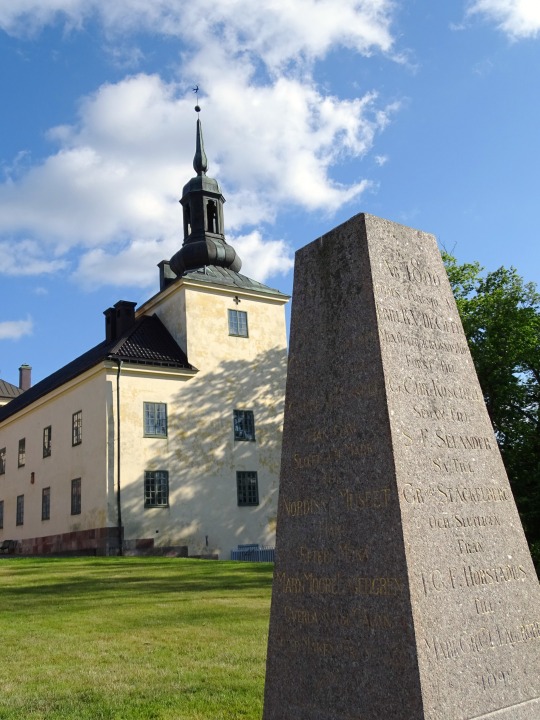
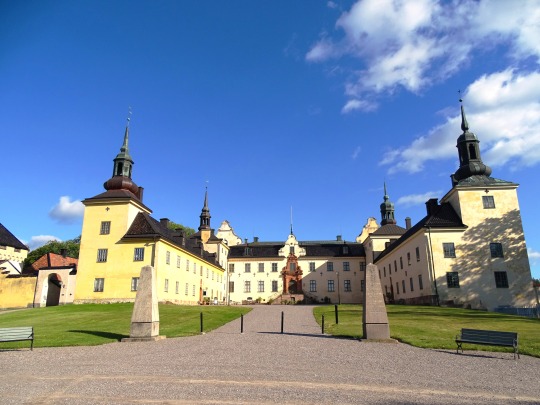

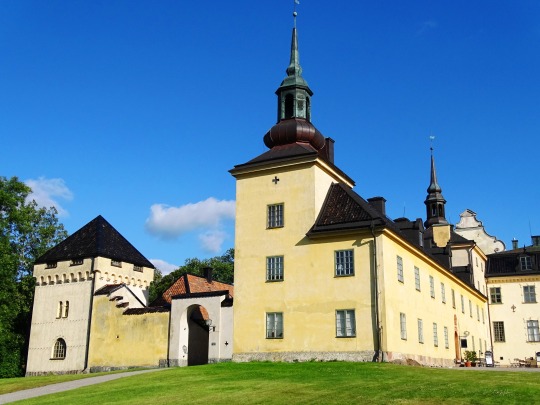
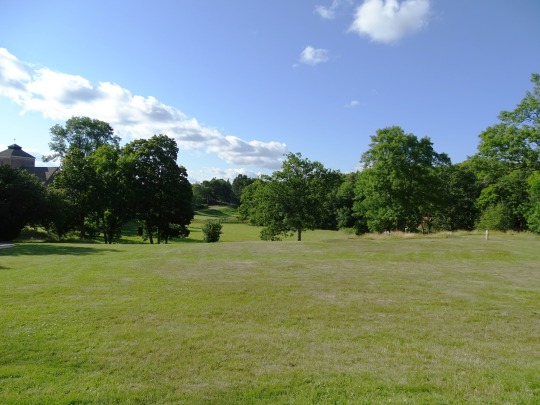
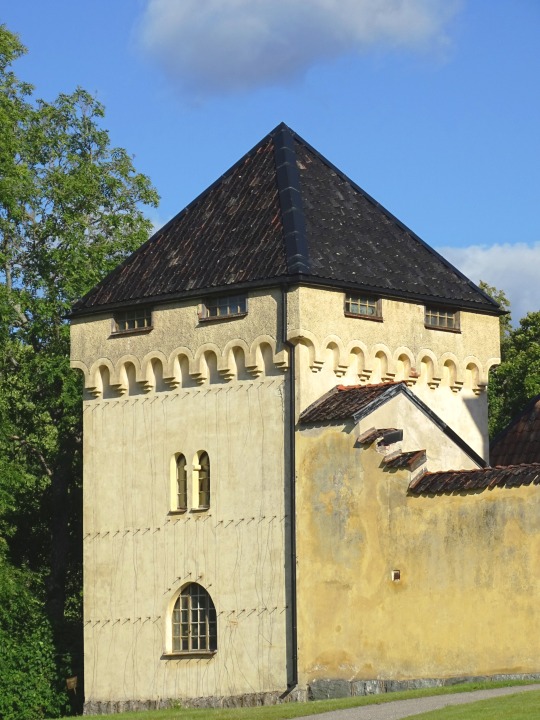
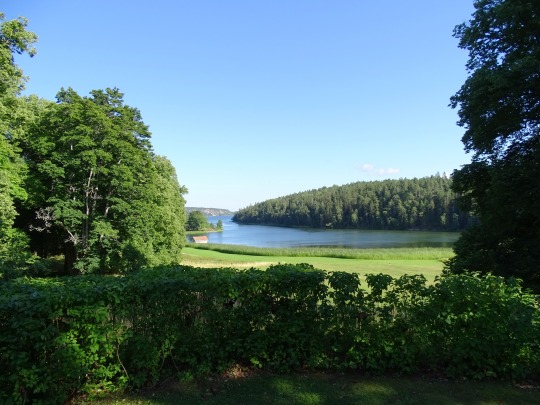
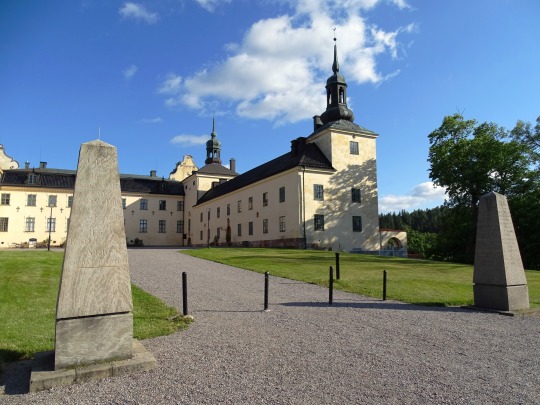

Tyresö Palace, Sweden (No. 10)
For eighteen summers, Prince Eugen lived at Lilla Tyresö in the house called the Prince’s Villa, which is a youth hostel today. Here he was undisturbed and could enjoy the nature and the landscape, which also served as the motif for some of his most famous paintings. Other artists regularly visited Prince Eugen while he was staying at Lilla Tyresö, which can be described as having been an artists’ colony during the years 1894–1912.
You can read more in the book Tyresö Palace. This tells of the buildings and parks, and also about the owners of the palace, the servants and visiting artists. The book is available in both Swedish and English.
Source
#Kalvfjärden#Tyresö Palace#Tyresö#Stockholm County#architecture#travel#landscape#Fredrik Magnus Piper#Isak Gustaf Clason#tourist attraction#Gabriel Gustafsson Oxenstierna#façade#evening light#English Garden#park#summer 2020#original photography#Scandinavia#Sweden#Sverige#Northern Europe#Baltic Sea#trail
15 notes
·
View notes
Photo

"The Cloud" by Prince Eugen of Sweden (1865-1947).
22 notes
·
View notes
Text

Grand Duke Konstantin Konstantinovich (standing, fifth from the right) and his wife Grand Duchess Elizabeth Mavrikievna (sitting, center) surrounded by members of royalties in Stockholm, 1897.
Sitting from left: Hilda, Grand Duchess of Baden; Crown Princess Victoria of Sweden (later Queen); Grand Duchess Elizabeth Mavrikievna of Russia; Crown Princess Louise of Denmark (later Queen); and Princess Bathildis of Waldeck-Pyrmont.
Standing from left: Wilhelm Ernst, Grand Duke of Saxe-Weimar-Eisenach; Wilhelm IV, Grand Duke of Luxembourg; Prince Ruprecht of Bavaria; Prince Chira of Siam; Frederick II, Grand Duke of Baden; Princess Ingeborg of Denmark; Crown Prince of Sweden (later Gustaf V); Crown Prince of Denmark (later Frederick VIII); Archduke Eugen of Austria; Prince Carl of Sweden; King Oscar II of Sweden; Prince Friedrich of Waldeck-Pyrmont; Grand Duke Konstantin Konstantinovich of Russia; Prince Christian of Schleswig-Holstein; Princess Thyra of Denmark; Prince Eugen, Duke of Närke; and Emanuele Filiberto, Duke of Aosta.
21 notes
·
View notes